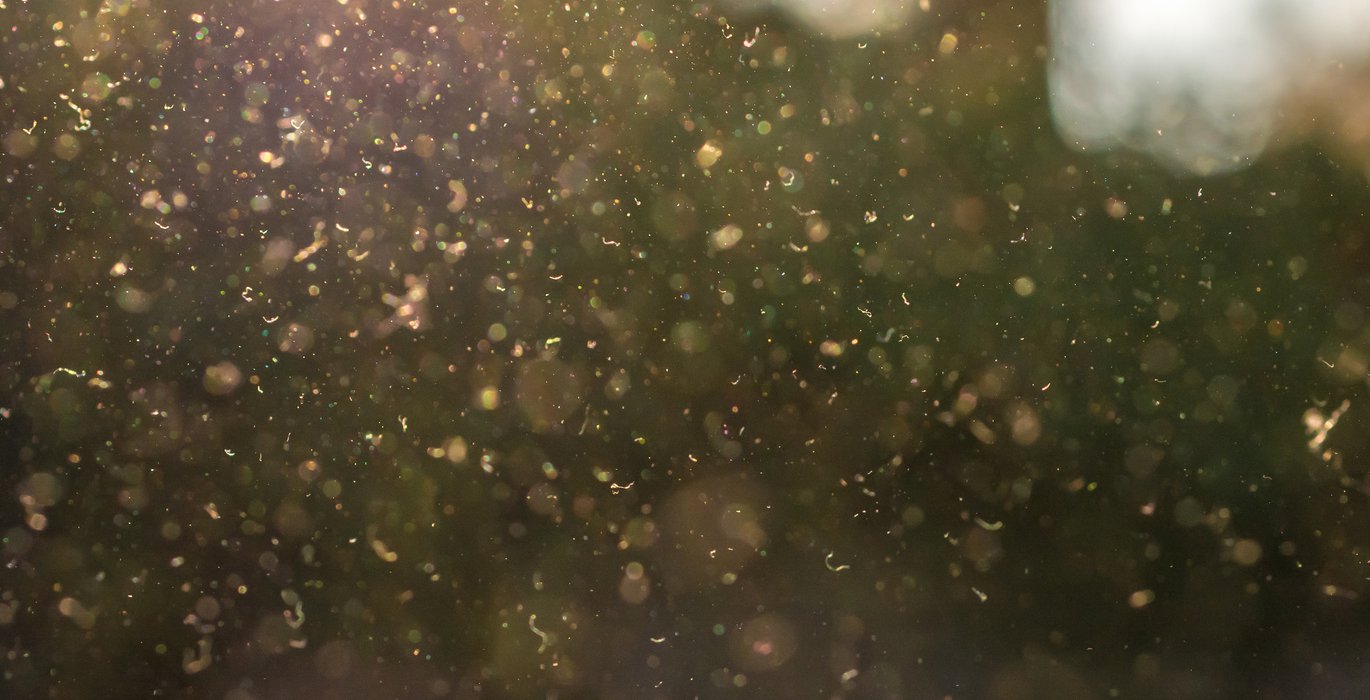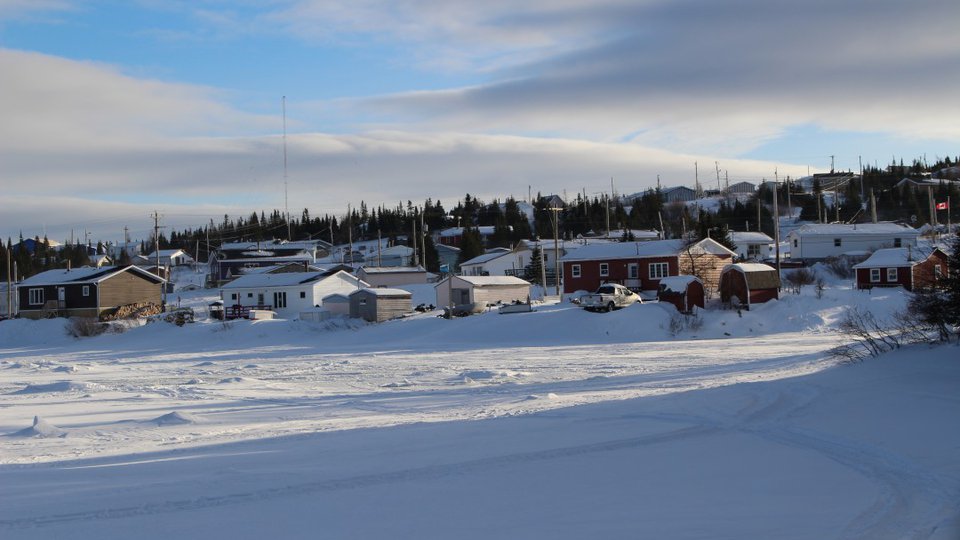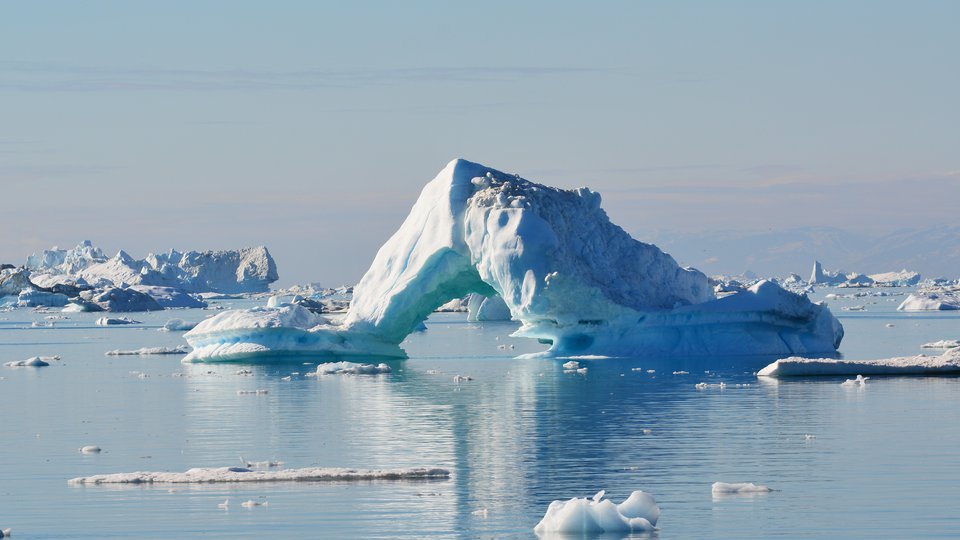
If you’ve recently been driving along a Yukon highway on a clear, sunny day, you may have noticed something odd–a smoke-like yellow haze undulating in the breeze above the trees on the horizon like a yellow ribbon.
It’s not smoke, though. It’s tree pollen. And it’s everywhere.
It dusts the hoods and windshields of any car parked outside for more than a few minutes. It turns a black dog’s muzzle and ears a soft yellow. It collects in a mustard-coloured scum around the edges of puddles and lakes and riverbanks. Even as this reporter writes this story, sitting outside at an open-air, outdoor desk, grains of pollen are blowing across the black keys of the keyboard in such quantity as to be visible to the naked eye.
“It’s intense around Dawson!” resident poet (and recent Borealis Prize Winner) Tara Borin says of the pollen bloom via Twitter “We’re coated in it! There was a day last week (in early June) where it was drifting through the valley in massive clouds.”
It's a haze of pollen–a storm, a fog, a miasma pollen.
Or, put another (more accurate) way: it’s an uncountable legion of dispersing male gametes free floating throughout the air, seeking female gametes (receptor buds) of the same species in a vast, wind dispersed arboreal orgy.
However, you’d like to think of it, it’s a lot of pollen, and a decidedly unusual volume of it.
That’s because it’s not just one species of tree sounding off on a reproductive frenzy during the early summer season this year, it’s two, specifically pine trees and spruce trees–and they’re very dedicated to the task. This is causing a “haystack inversion of pollen,” says Cory Chouinard, a silvicultural forester with the Yukon government, which in laymen’s terms means there’s been a huge pollen dump by both tree species at the same time, saturating the environment with the light yellow spores.
“That's why we see so much happening now, because it's both the spruce and the pine (pollinating),” he says.
If you’re sensitive, it can trigger allergies, fits of sneezing, watery eyes and scratchy throats–even some pets are affected by it (although birch pollen is a more common culprit when it comes to serious tree pollen allergies.)
Regardless of the precise species you’re allergic too, it’s impact is noticeable–and worrying for some people, as allergic reactions can mimic COVID-19 symptoms. This reporter, who has asthma, has taken several rapid tests recently, in order to beat the odds on the “is it COVID or is it allergies?” game everyone is presently playing.
“It’s yellow hell,” Doug Rutherford, painter and long-time Whitehorse-area resident, said via twitter, jokingly adding that “I would willingly cut every pine tree to the ground this time of year if I could afford enough gas for my chainsaw to do it.”
“The same things that make it good for fire make it good for spruce cones– i.e. warmer and drier summers.”
Pine trees send out pollen every year around this time–that we would see some pine pollen in late May and early June is a perfectly normal event in Yukon, says Chouinard–but spruce trees are a “masting” species, meaning they reproduce (mostly) all at the same time, making a bumper-crop of cones. This happens every two to 10 years, he notes, and is dependent not on this season’s weather, but on having the right conditions last year–specifically, warm, dry weather the previous July, which triggers the juvenile formation of sexed buds.
“So if we were to look at what's happening now, this is actually year two of the cycle,” says Chouinard. “In year one, which would have been last year, you get the formation of the male and female (spruce) reproductive buds…that starting is actually dependant on the temperatures and the conditions the July before. This is why (masting) doesn't happen every year– things have to be just lined up in just the correct way.”
The ideal July temperatures required to put spruce trees in a frisky mood involve (for the North) relatively high max temperatures and higher temperature averages over a period of days, as well as less precipitation–which are also the ideal conditions for forest fires, Chouinard notes.
“The same things that make it good for fire make it good for spruce cones– i.e. warmer and drier summers,” he says.
Because spruce require temperature-specific conditions to trigger their reproductive cycle, you often get pockets of pollination with this species, he says: for example, you might have the right conditions in the previous July in the Dawson the region, but not in Beaver Creek, some 450 KM south, so you’d get masting in the first area but not the other the next year. However, if the conditions are right–as they were last year–masting can occur over large swaths of territory, and spruce can disperse their pollen “on a landscape level.”
“So this spring (is) year two (in the cycle) and we see the development of the pollen cones…the male flowers turn into pollen cones and the female buds develop into seed cones. And that's what we see now…the male reproductive buds are releasing their pollen at the same time as the pine,” Chouinard says.
“It can be very yellow (from pollen) over a large area when the spruce are ready to go–and it seems this year they are.”
All spruce trees produce both male and female reproductive buds, although the sexed buds aren’t always evenly dispersed, and some trees have more of one than the other. Male buds are pinkish, and often higher up on the tree, while female buds hang lower and below the branch–if successfully fertilized, these female buds become viable spruce cones, chock full of seeds ready to disperse and become new, baby spruce trees.
That if, though, is a pretty big factor, says Chouinard; again, the conditions need to be just right. Although there is a lot of pollen in the air right now, things like rain–such as the frequent small storms the Yukon has been seeing over the last few weeks–can push the pollen down, where it sticks useless to the ground or gets washed away. This means that although there’s a lot of pollen in the air right now, it doesn’t necessarily guarantee a successful mating session for the spruce trees.
“We’ve got a lot of pollen out there, flying around in the air,” he says. “Now we're hoping that that leads to fertilization of the female reproductive bits… and if it does work, then by mid July, we will start to see the cones developing properly, and we'll know whether or not we have a cone collection potential or a large cone crop for the fall. And those cones ripen up at the end of August, early September up in this area.
This success is important not just from the perspective of the trees, but also for animals, for whom the cones create a windfall of extra food, and for foresters like Chouinard, who harvest the cones to keep their stocks for growing seedlings up to date and replenished.
Regardless of how many new spruce (and pine) trees this year’s pollination event ends up producing, there’s no denying there is a lot of pollen in the air. Keeping in mind that pollen is infinitesimally small–a pinch may contain thousands of individual grains–the sheer quantity of it can be boggling to think about.
“It is a lot.. It’s amazing,” says Chouinard. “If you just, you know, (think about) putting your hands in flour and clapping them, how much of a dust cloud that would be. You're talking hundreds of thousands sometimes of little dust grains… that’s why it spreads across the land and coats everything the way it does.”





